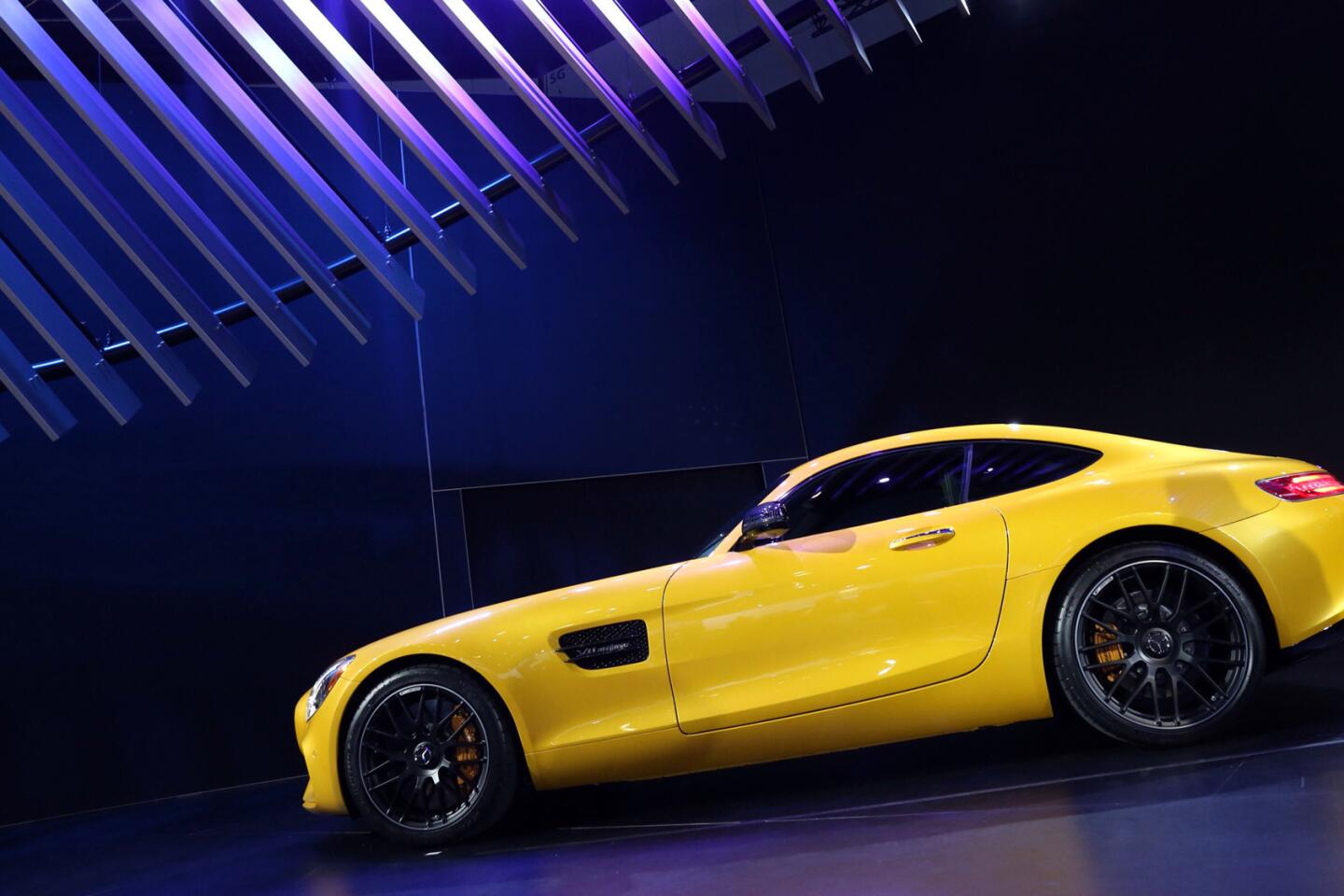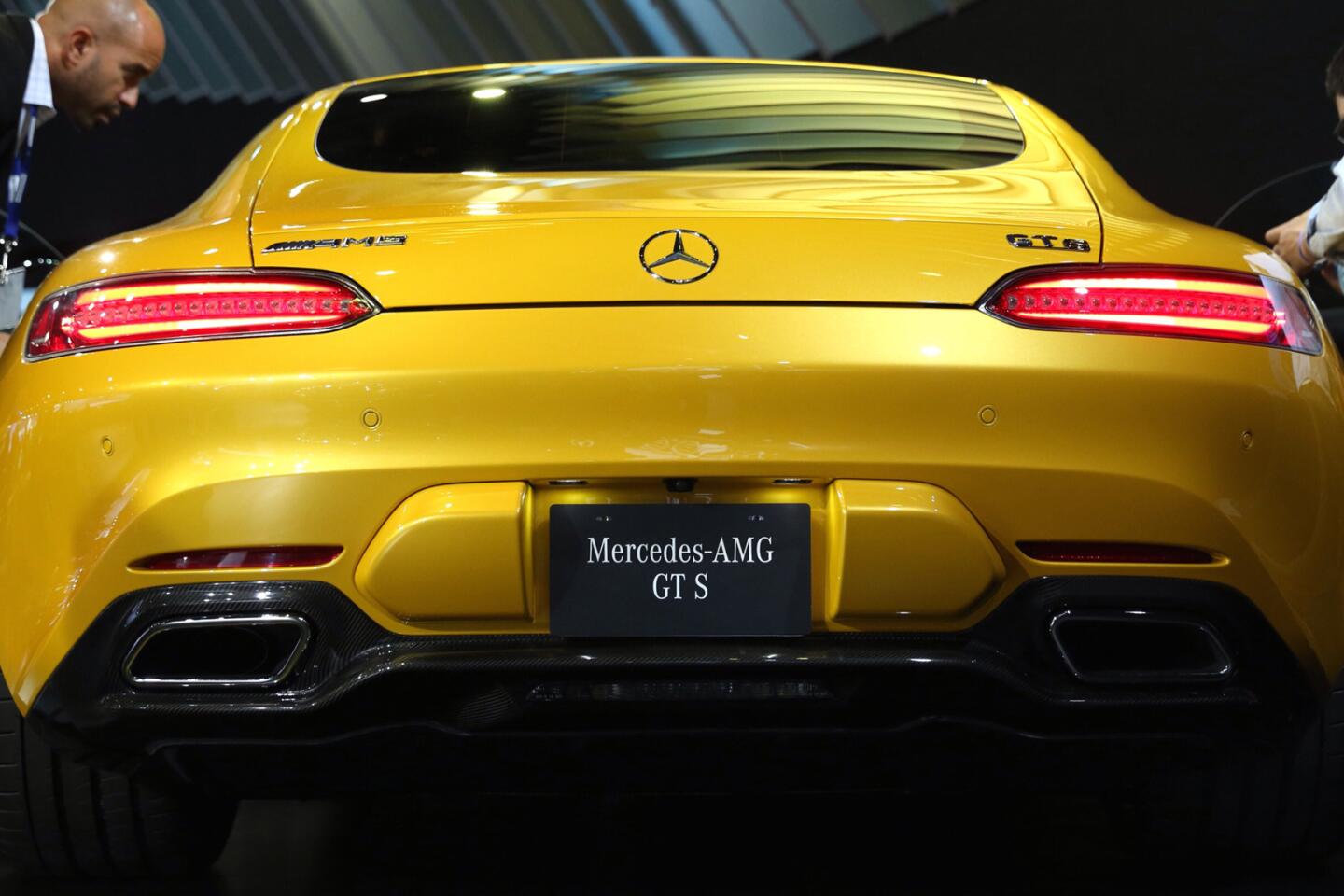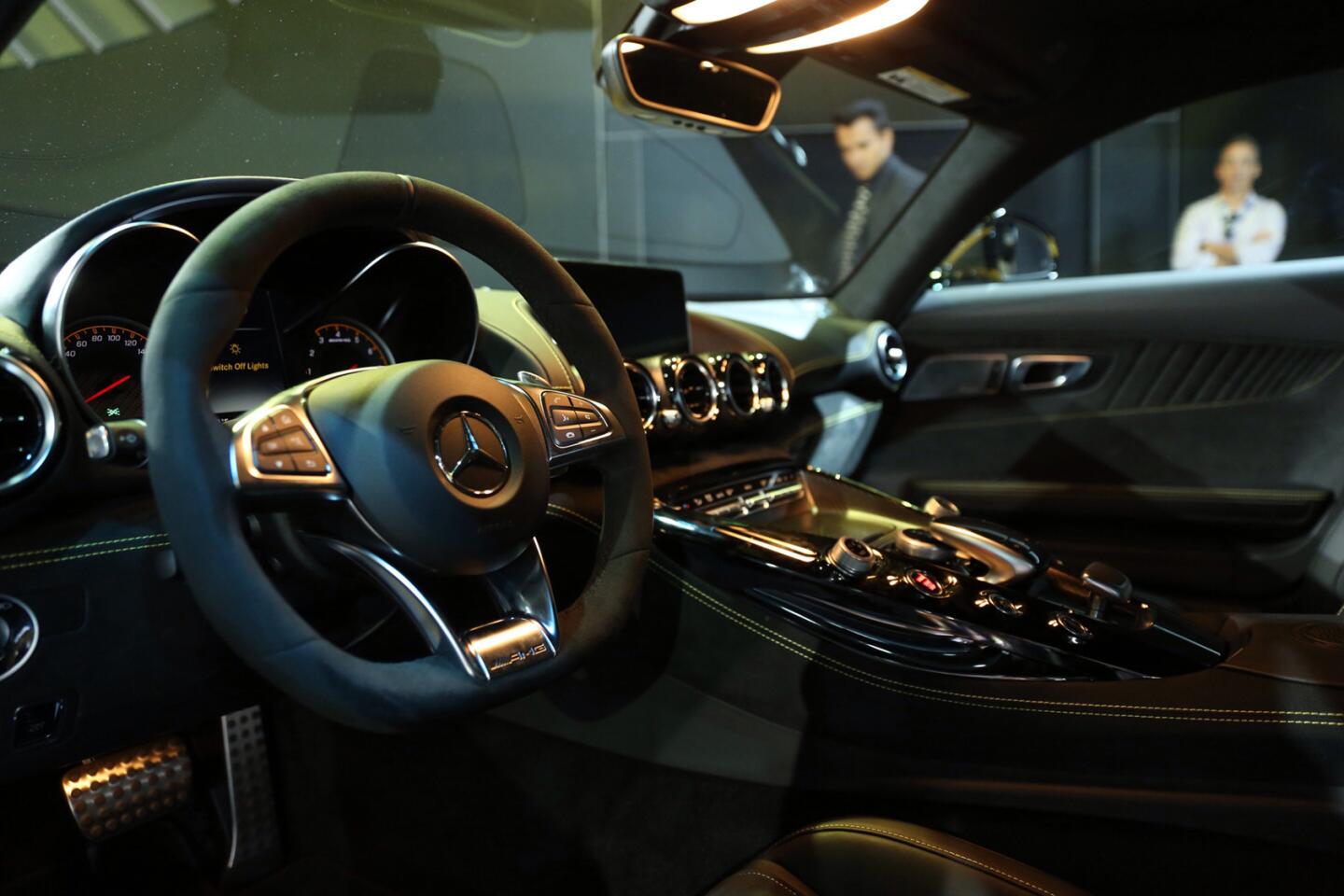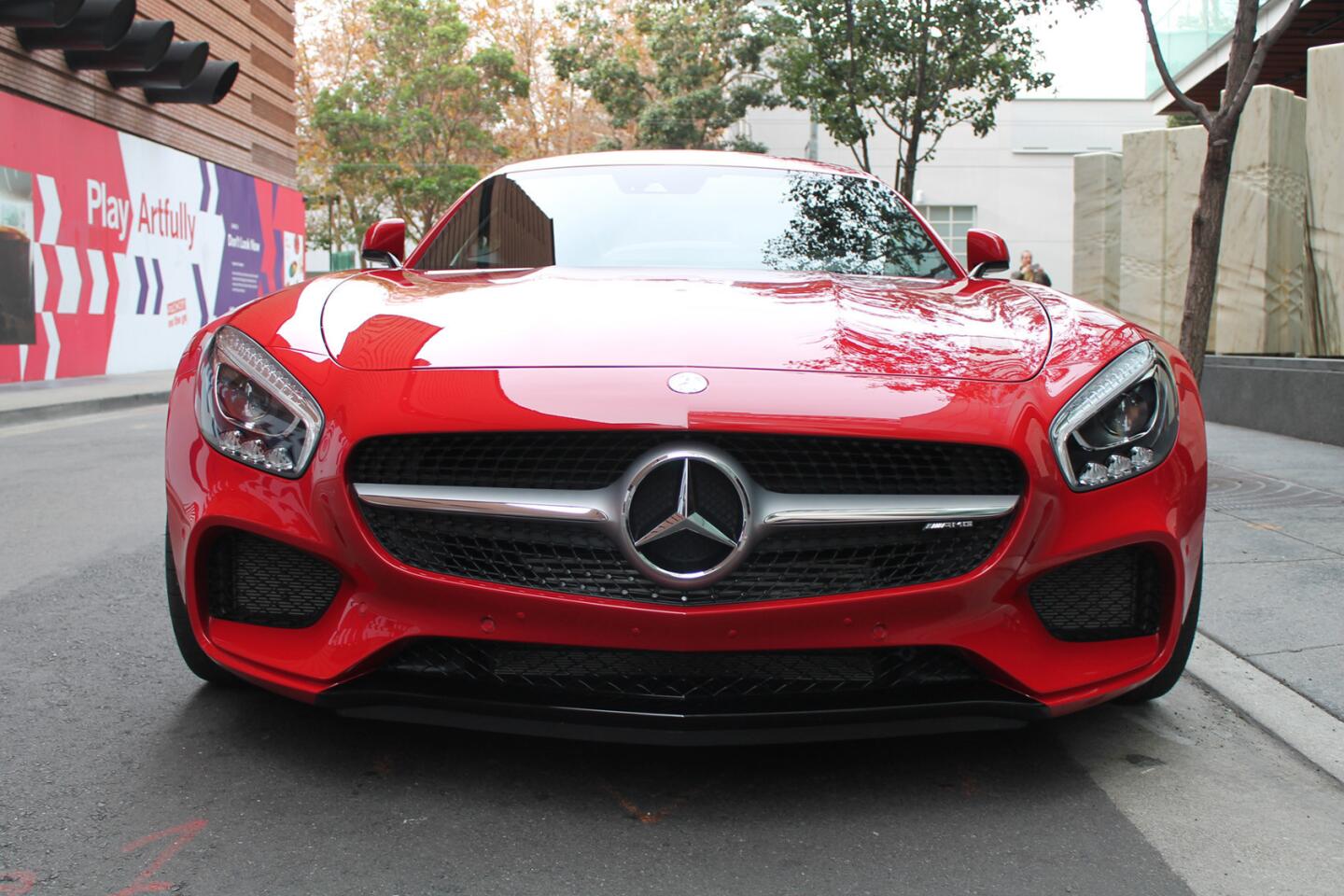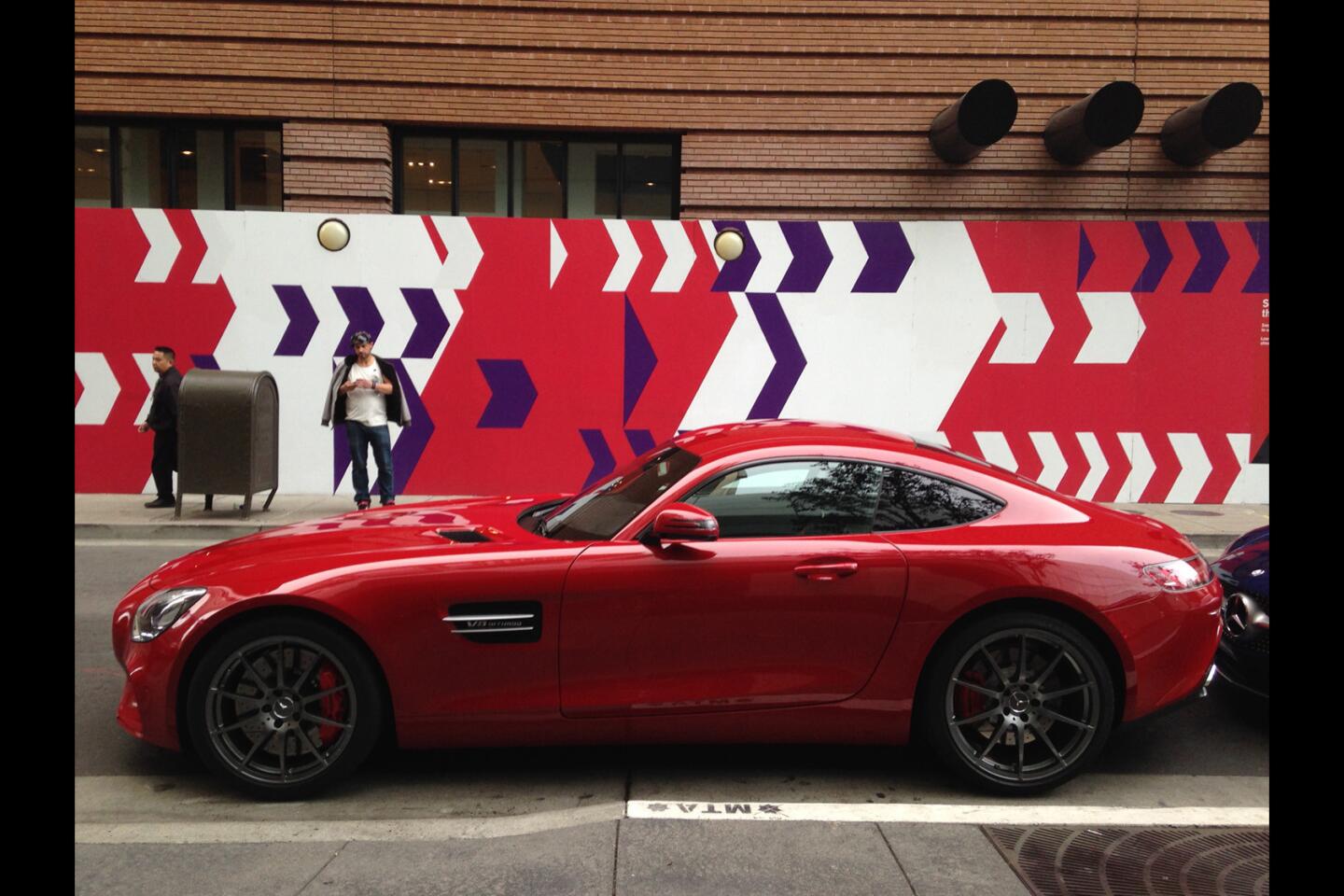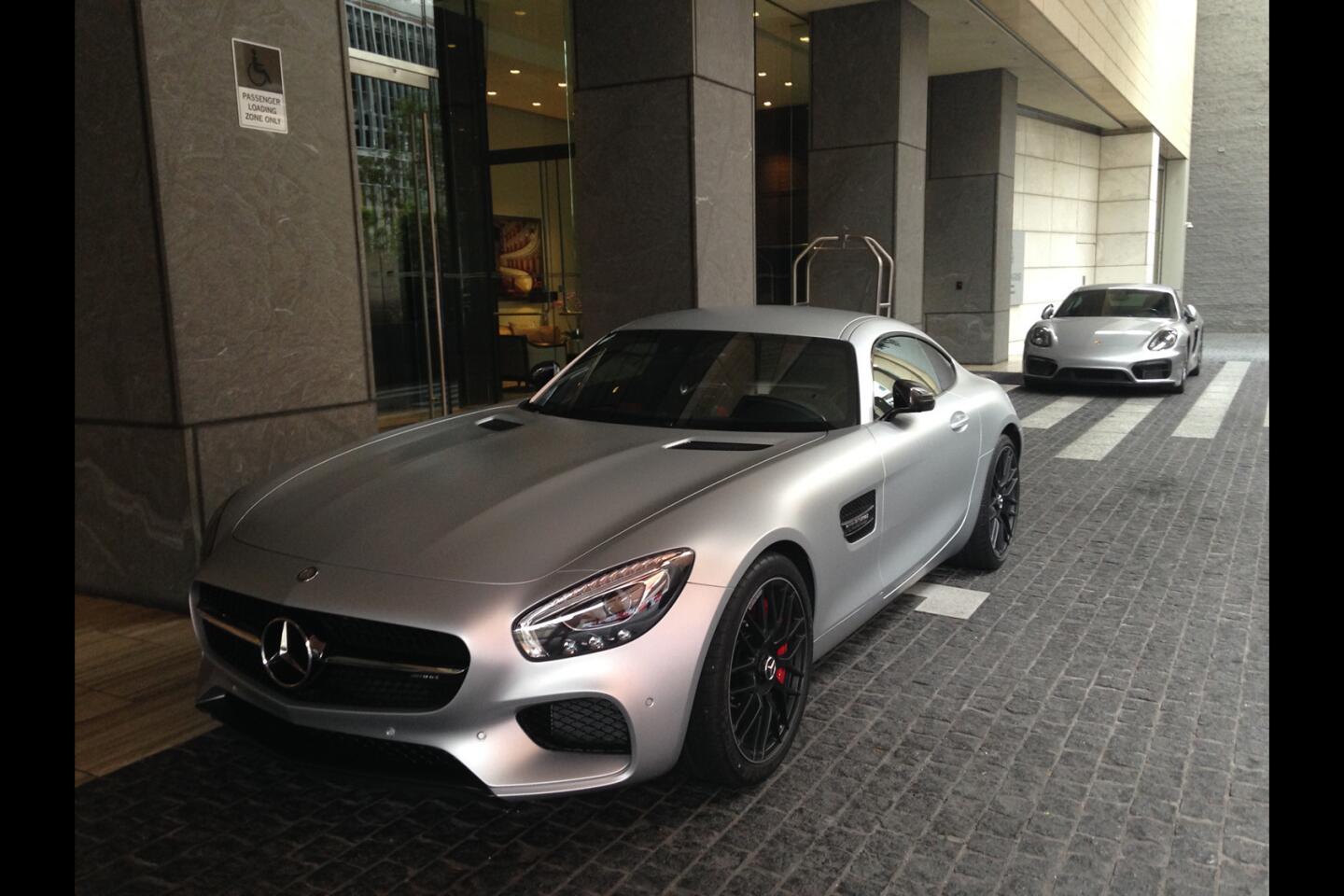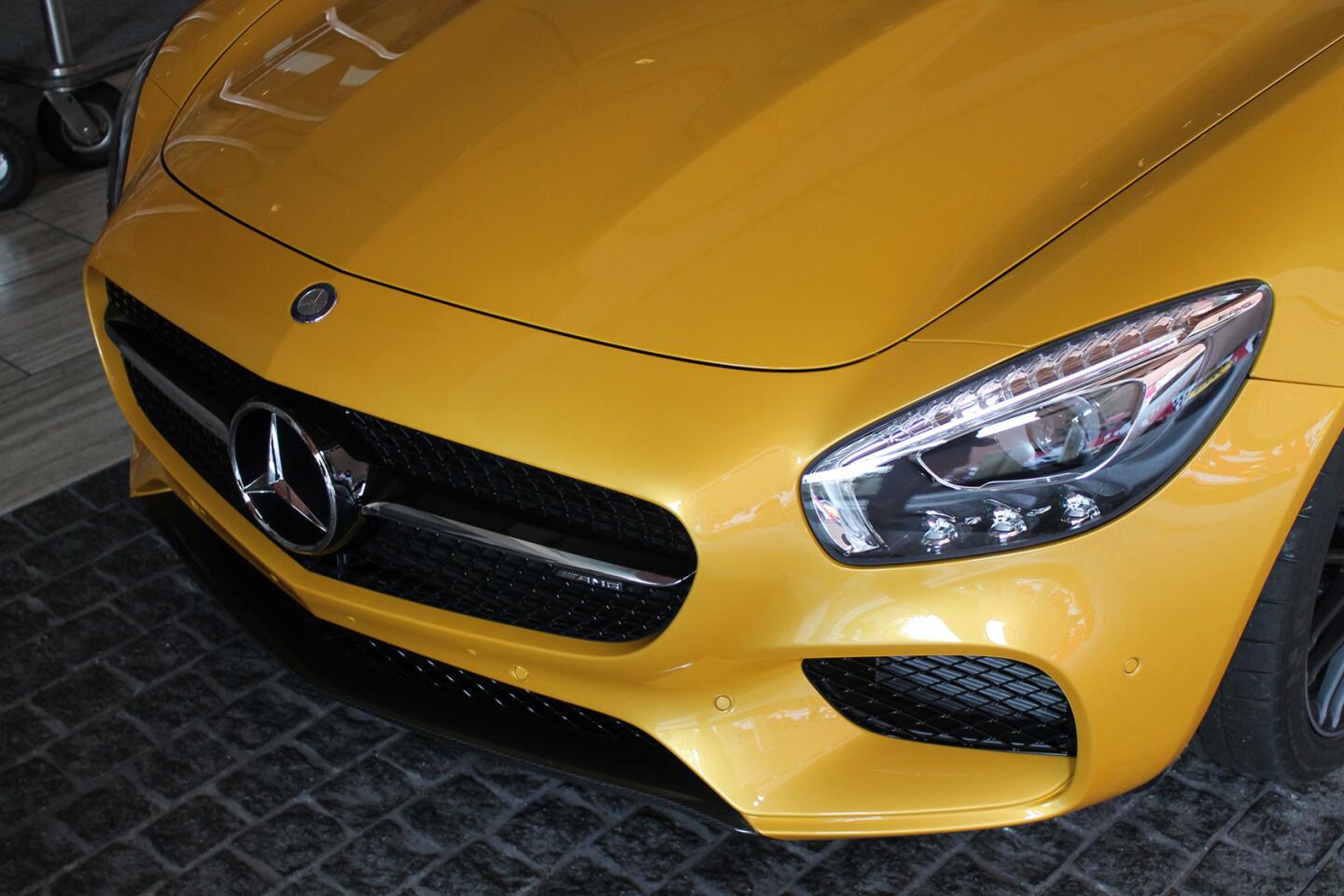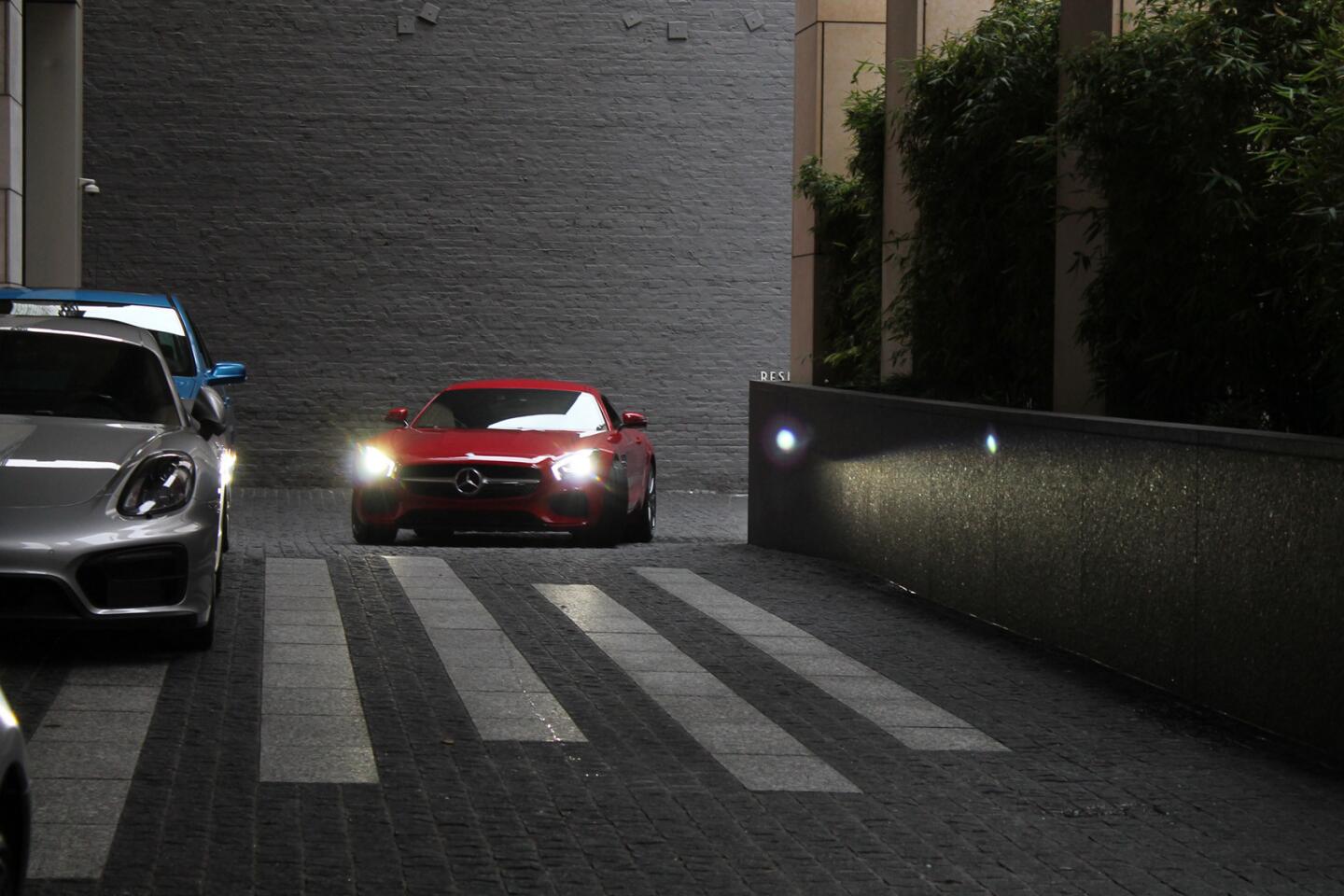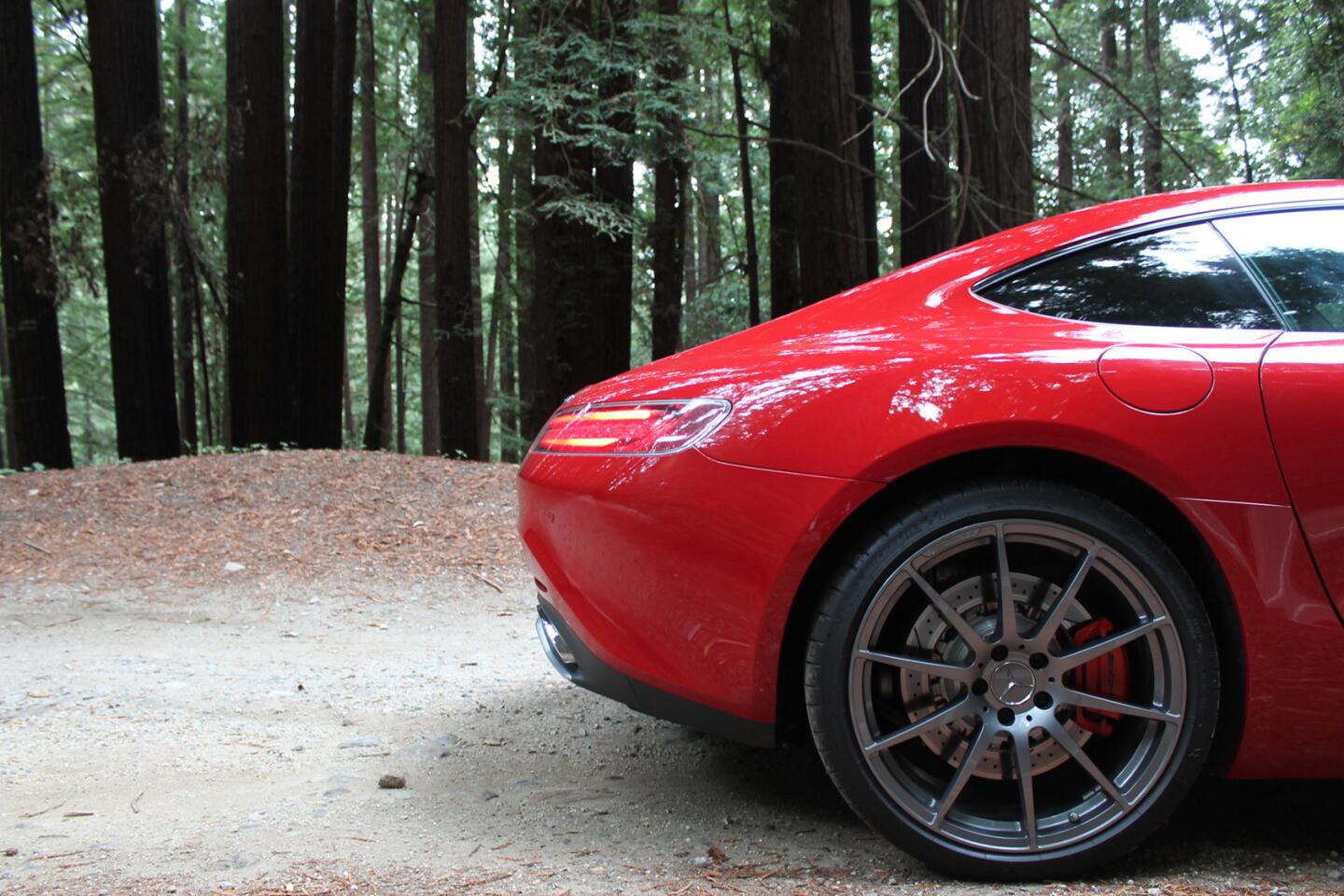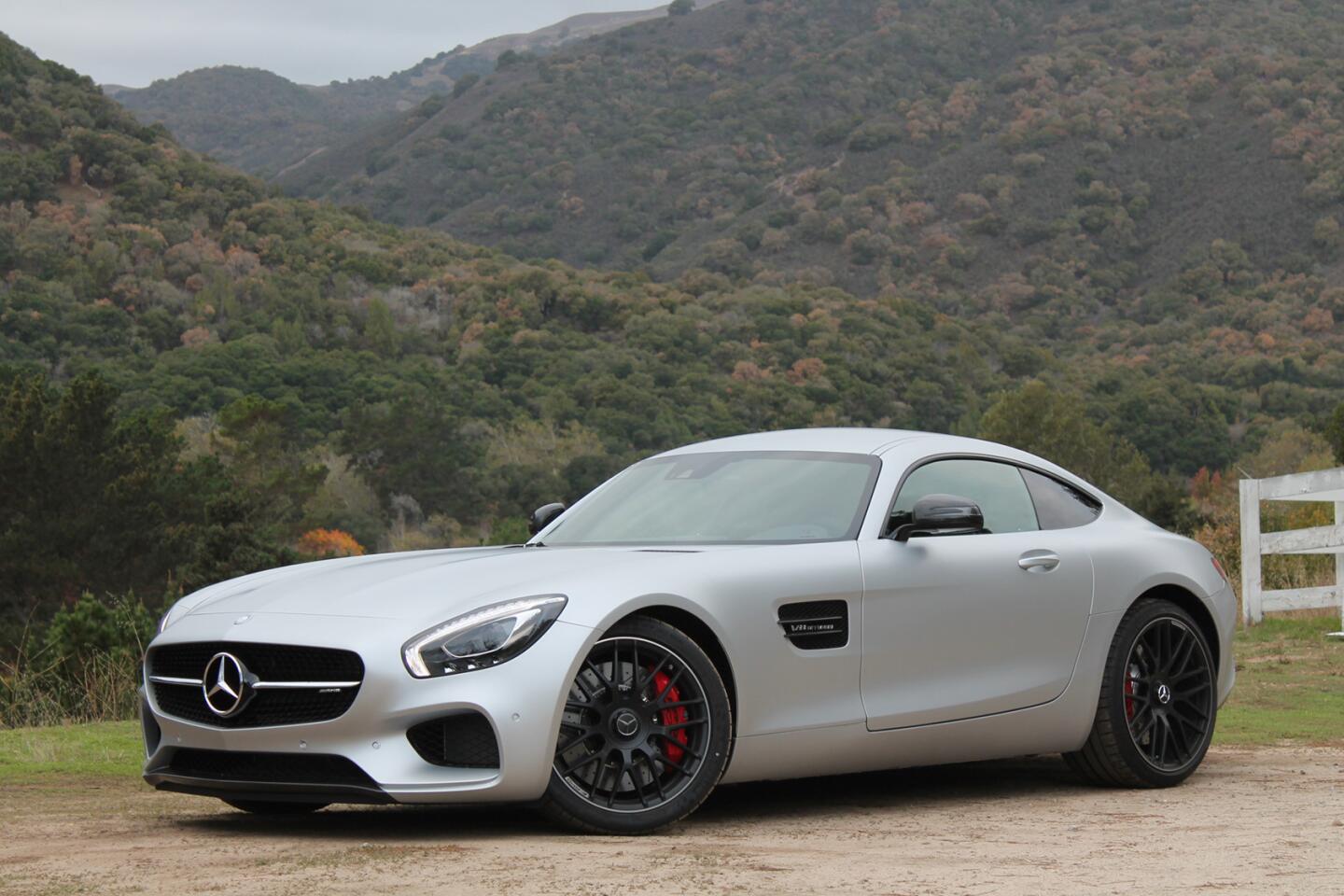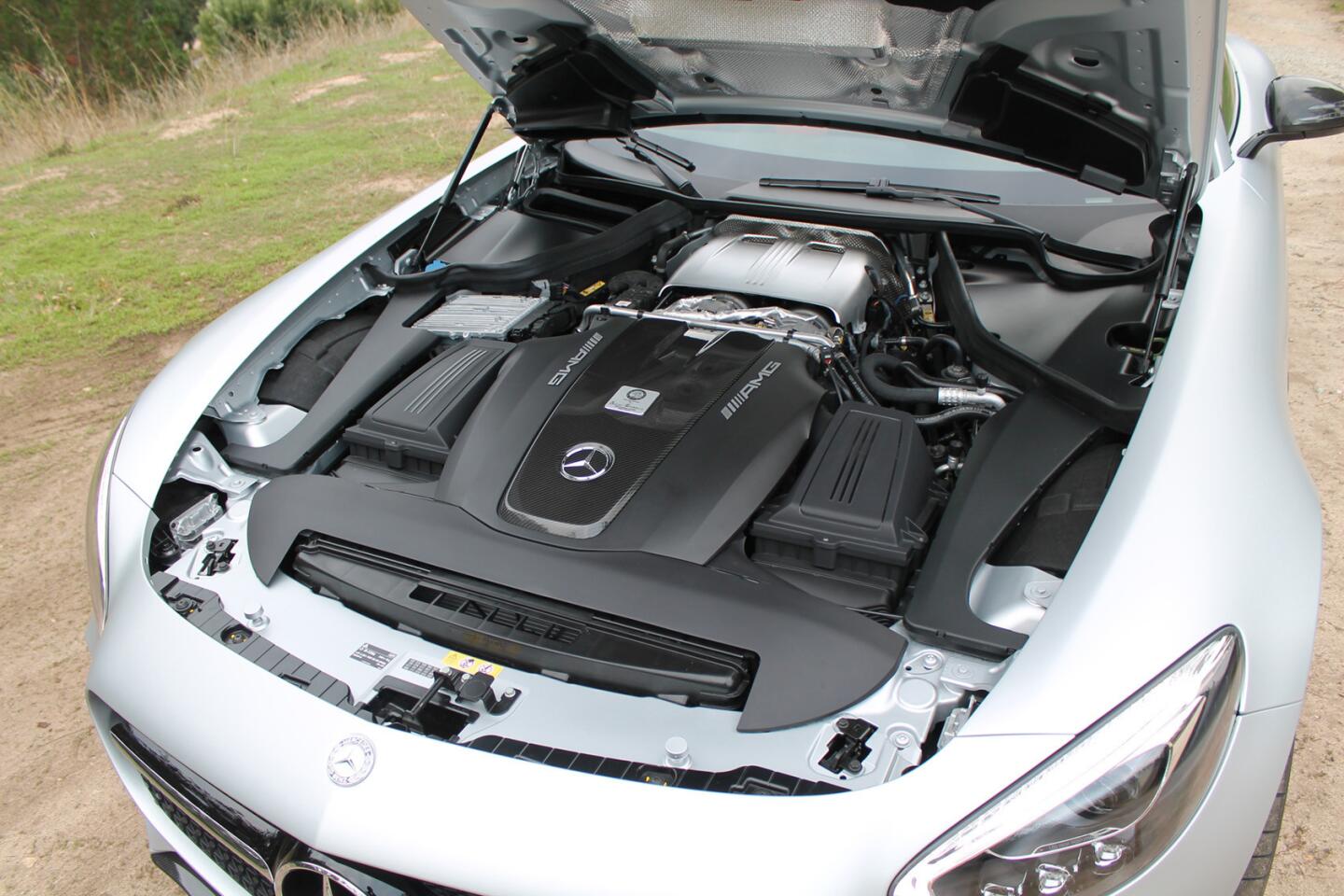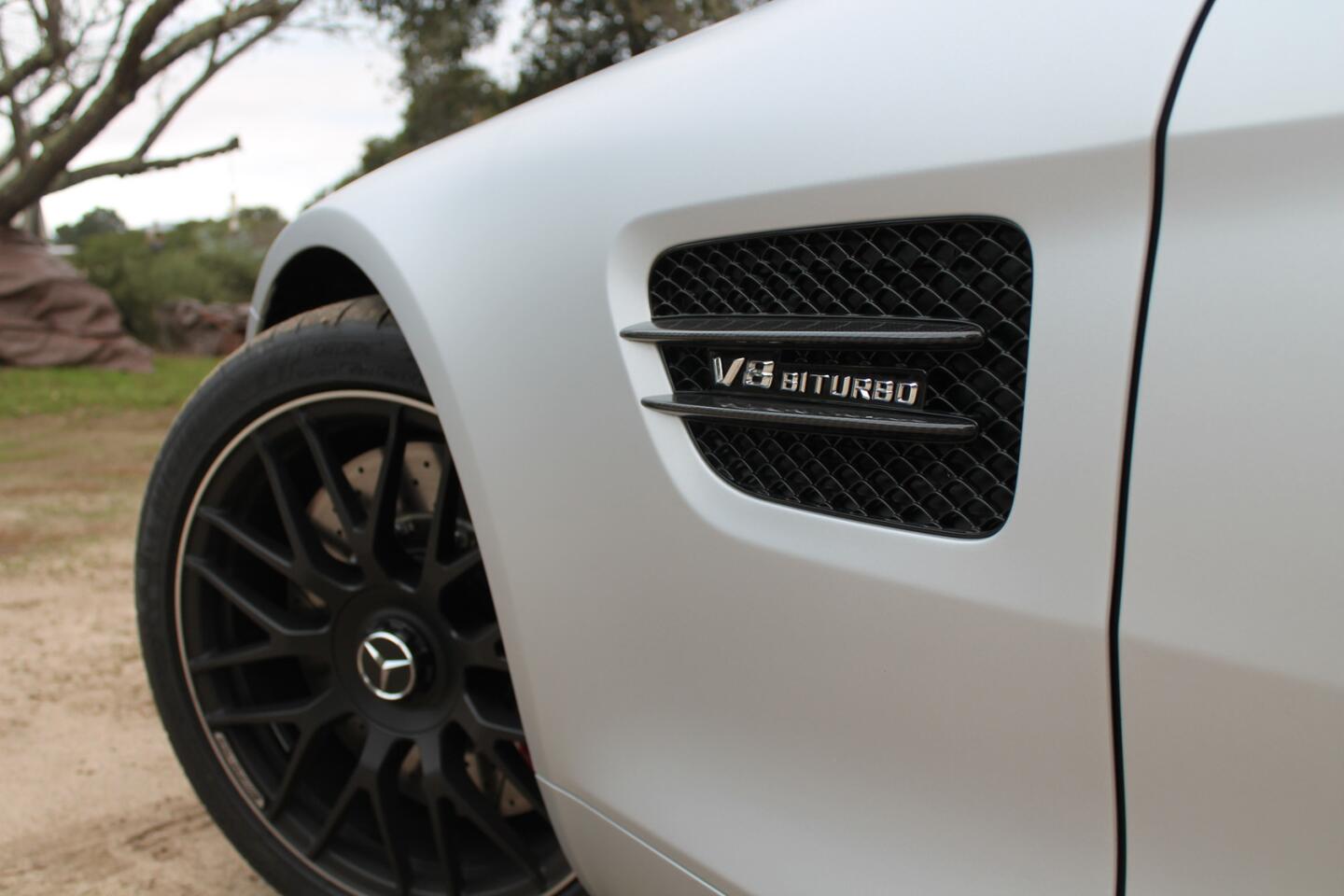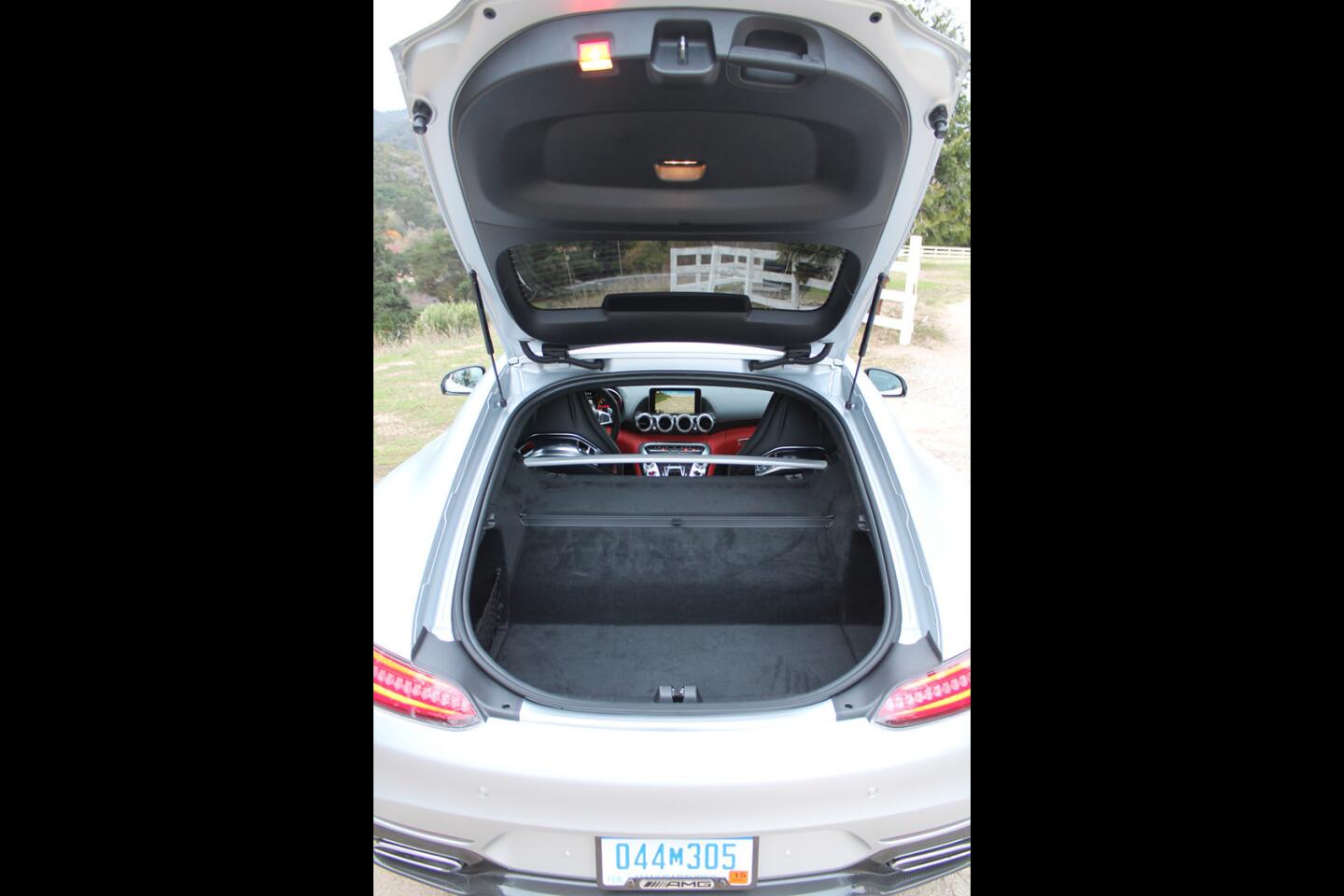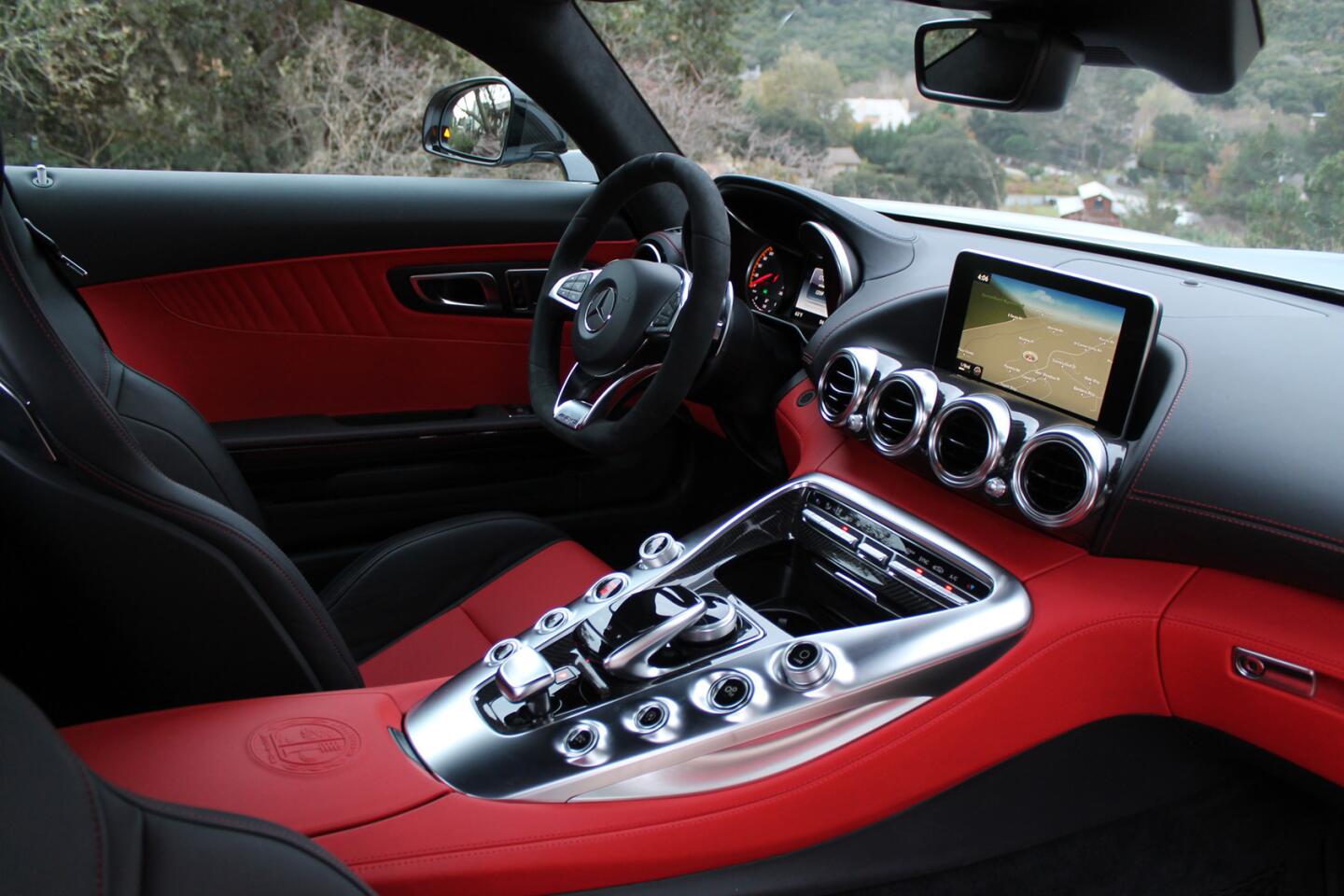First drive: Mercedes-AMG GT S muscles in on the sports car segment
- Share via
The question first popped up when the 503-horsepower Mercedes-AMG GT S roared to life one cool morning last week in San Francisco: This is from a German car company, right?
With a throaty burble at idle, and crackling exhaust when you lift the throttle, it sounded more like an American muscle car than a German sports car.
Later that day, on the famed Laguna Seca track in Salinas, the car’s American flavor — loud, rude and easy to provoke into tail slides — seemed even more pronounced.
The GT S is gunning for the Audi R8 and the Porsche 911, with their characteristically German precision and buttoned-up road manners, maintained even at blistering speeds. The GT S, by contrast, is a riot from the driver’s seat. Visceral and alive, you can almost feel a pulse coming through the suede-wrapped steering wheel.
The 2016 Mercedes-AMG GT S made its North American debut last week at the L.A. Auto Show, which is open to the public through Sunday. To go on sale next spring, the GT S is the first offering from Mercedes’ recently renamed performance subbrand.
The slightly de-tuned but mechanically identical base GT model will arrive in 2016. And the AMG crew will still build frighteningly fast versions of nearly everything else in Mercedes’ growing stable: sedans, SUVs, station wagons, whatever.
The AMG GT models are loosely based on the gull-winged SLS AMG, and they use a derivative of the SLS’s aluminum frame. Compared with the outgoing SLS, the GT shaves two inches off the wheelbase and 3.5 inches off the overall length.
Its proportions are seductive: a long hood and high beltline, matched with a low-slung cockpit that melts into a rear end with a fully-retractable rear spoiler. This car has no edges; one panel flows into the next.
Inside, the cockpit wraps around the driver and passenger, who sit low within the car’s clutches. There’s plenty of headroom, even for tall passengers wearing helmets. Trunk space under the car’s sloping hatchback is a usable 12.4 cubic feet.
Downsides include poor visibility and ergonomics. Mercedes put the transmission’s shifter too far back on the center console. And too many buttons crowd around the shifter, controlling suspension, transmission, exhaust and four driving modes.
But the cockpit is nonetheless beautiful and assembled with a fanatical attention to detail. The interior is as curvaceous as the exterior, and slathered with leather, suede and brushed metal.
Nestled in that center console is the engine’s starter button. Press it and the GT’s burly V-8 roars to life before settling down with a hearty rumble.
Around town, the GT S we tested was surprisingly stiff, even with the suspension set to “Comfort.” Be prepared for a jarring ride if your commute is anything like the pockmarked mess of San Francisco streets.
But once the road smooths out and the traffic subsides, the GT is a world-class athlete.
The engine never lets on that it’s turbocharged; there’s not a whiff of lag or hint of turbo whine anywhere. It pulls the car toward the horizon with astonishing acceleration, hitting 60 mph in 3.7 seconds, and never lets up. Top speed is 193 mph.
Heightening the experience is the orchestral roar flowing from the two trapezoidal tailpipes.
The GT and GT S have a seven-speed dual-clutch automated transmission. It’s hyper-quick, though less smooth than the one offered by Porsche. The light steering takes a little getting used to, but feels more natural as the car builds speed.
Despite a 3,500-pound curb weight, the car changes direction with sure-footed poise. And yet it was still easy to break the tail loose in a predictable drift. Smart stability control software and an electronically locking rear differential keep the car facing forward and clear of track-side walls or roadside ditches.
By virtue of being a German sports car, Mercedes will inevitably draw comparisons to the Porsche 911, which is offered in infinite configurations from $100,000 to $200,000.
Based on power output, the AMG GT S would most closely match up with Porsche’s 520-horsepower 911 Turbo. But that car has a rear-mounted six-cylinder engine and all-wheel drive, giving it fundamentally different handling than the front-engine, rear-drive AMG GT S.
The Porsche Turbo also costs more, with a starting price of $152,000 — about the price of a loaded AMG GT S.
Better to just acknowledge that the AMG GT is a wholly different car than anything with “911” glued to its tail. And that’s a good thing. There’s plenty of room in this rarefied market segment for competing philosophies.
The GT S faces other worthy competitors, including Aston Martin’s excellent-yet-aging V-8 Vantage, the Nissan GT-R, Jaguar F-Type R AWD and the aforementioned Audi R8 family.
Similarly priced 911s offer more precision and speed, and would probably hustle around the track in less time. But the wilder, louder AMG GT S is more concerned with having fun. Consider it German with an American accent.
david.undercoffler@latimes.com
Twitter: @latimes_driven
